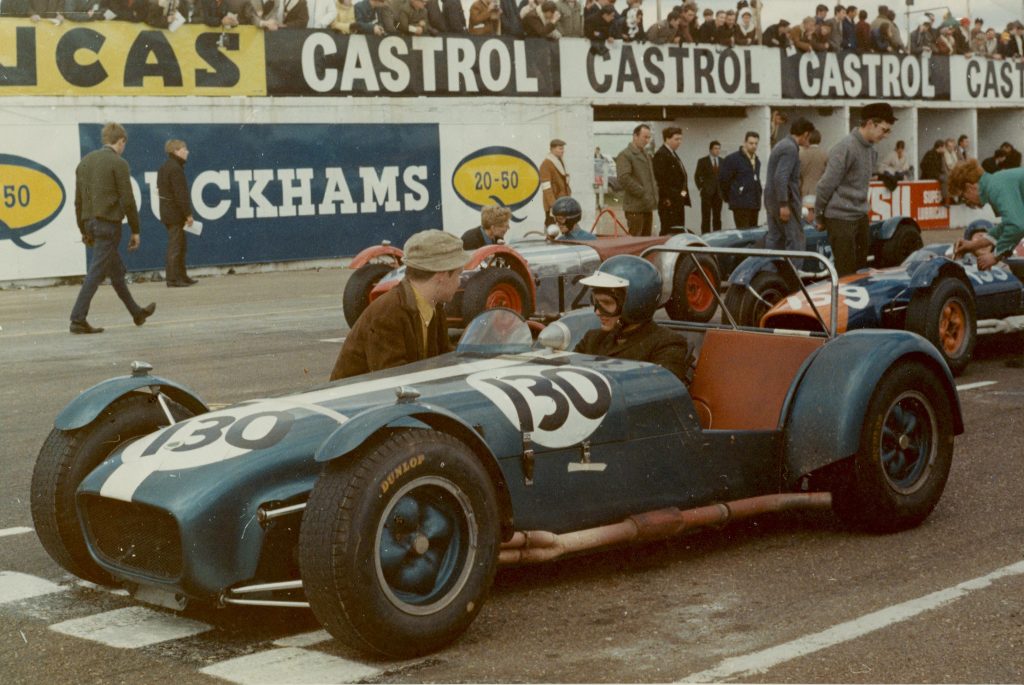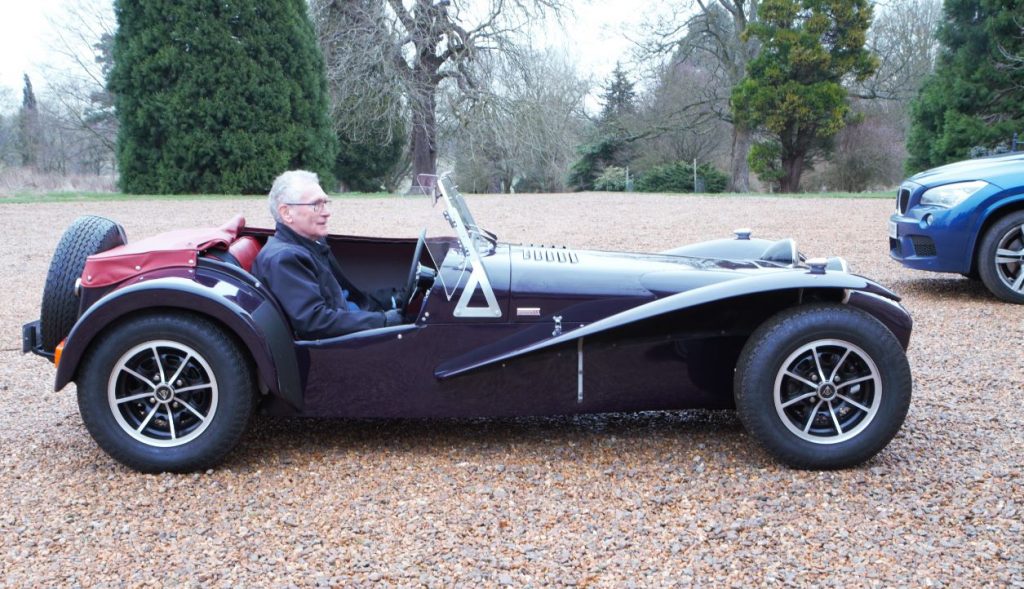Tim Goss, the British race car driver from Hampstead (North London), achieved a lot in his career. He is largely known for sports car driving. Tim started racing 1964 in a Lotus 7. His fame peaked from 1967 until the early 70s when he raced the one off Lotus 3/7 and the Lotus 7X for Lotus components in Clubmans Championship. And became multiple British champion. Also in single seaters – F3 March 713M, F2 Brabham BT36 – he proved his talent, especially in the wet. Tim raced in a lot of different classes in the 70s nd 80s before changing careers to the office.

Nowadays Tim is a fit and slim man in his seventies who still races on invitation. Since 2006 he passes on his knowledge and experience, after working for many years for BMW, by training others. Through the Ian Taylor Racing School at Thruxton and the Silverstone Race School test drivers from McLaren and Porsche, among many others, mastered the tricks of the trade under his guidance. And until today you can book a Tim Goss Advanced Driving training (gossadvanceddriving@gmail.com) to improve your skills as a ‘regular’ driver or track driver.

When it comes to improving your driving skills, to fully understand understeer and oversteer is indispensable. They form the basics for handling any car in tricky situations and even more for handling a sports car in these circumstances. On this page Tim explains the principles of understeer and oversteer, in a lively and understandable way (the video’s are picked by Bends and Curves).
Understeer and oversteer and how to react
“When a car loses grip on a corner this tends to manifest itself in either the front of the car carrying straight on despite the efforts of the driver to steer, (understeer) or the back of the car trying to overtake the front with the car subsequently spinning round (oversteer).”
“As a general rule, the grip is where the weight is. Thus the more weight that is transferred to the tyre, the better it will grip. For this reason most production cars are designed, if they lose control on a bend – through driving too fast ‘over the limit’, or through hitting a slippery road surface – to understeer, because this is a lot easier to control than oversteer.”
“Why is understeer easier to control? Imagine your car is full of water up to the dashboard. Where is the water sloshing? If you are driving in a straight line at a constant speed, the water will be level and equally distributed – so you will have evenly distributed weight (and as a result grip), on all four wheels. But if in the middle of a corner you hit something slippery and the car slides straight on despite your efforts to steer, your natural intuitive reaction will be to slow down. This in turn will cause that ‘water’ to rush forward adding weight and resultant grip to the front tyres, thus enabling you to regain steering control.”
“As a general rule, the grip is where the weight is.”
Tim Goss
“Alternatively, imagine the rear of the car has hit oil or ice, and you lose the back end. Firstly it is important to ‘steer into the skid’ or in other words steer in the same direction as the tail of the car is going. This is simply to make the front follow the back. Admittedly the car will move across slightly, but at least it will stay pointing forward. Clearly if, say, the car was spinning in a clock-wise direction, with the tail sliding to the left, and you steered to the right, this would enhance the spin.”
“The trouble with oversteer is that if, as with an understeer situation, you instinctively slow down, the weight will be thrown forward relieving the back tyres of weight, and making the spin worse. So to cope with oversteer you have to a) turn into the skid, and b) keep the power on.”
“An example of where weight transfer can go wrong can be seen in one of the most common crashes in motor racing – where a driver decides in mid corner that he or she is going too fast and subsequently slows down. This throws the weight forward, lightening the weight and grip on the rear tyres, and as a result the car spins round. This is commonly known as ‘lift-off oversteer’.
“Finally – all this goes out of the window if the wheels spin. In a rear wheel drive car if the back wheels are spinning, they quite simply are not gripping the road regardless of where the weight is. So accelerating hard to a point where the rear wheels spin, when applying steering lock, can induce oversteer. There are occasions where deliberately doing this can be useful – for instance exiting a hairpin where you want to get the front pointing in the opposite direction as quickly as possible. In the old days, the ‘hand brake turn’ was utilised to do this, by, rather than spinning the wheels to deliberately lose grip, locking the rear wheels by momentarily applying the handbrake.”
“In the case of front wheel drive cars, accelerating hard whilst steering will cause wheel spin, and subsequent understeer, again because the weight is being transferred to the back. It is, therefore, understandably particularly challenging to deliberately induce oversteer in a front wheel drive car.”
“As a result of the above, we should also have a better understanding of why it is preferable to brake before, rather than in the middle of, a corner. Braking in a straight line will mean the weight (and as a result braking efficiency) will be spread evenly between the front wheels.”
“Remember this – a car fundamentally wants to go in a straight line. That is when it behaves itself best. Applying steering lock creates resistance on the front and the dynamics of the car will change, with it immediately becoming unbalanced. In a rear wheel drive car, if accelerating whilst steering, the back will try to overtake the front. That is why so many supercar drivers become unstuck. There is a relationship between how far down your foot is on the gas pedal, and how much steering input you are applying.”
